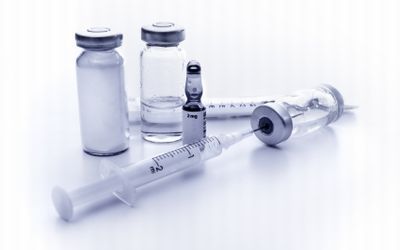Survey Shares Pharmacist, Technician Perspectives on Compounded Sterile Product Management

The national outbreak last year of fungal meningitis from contaminated steroid
injections dispensed from a compounding pharmacy issued a wake-up call to the healthcare community. Results from a survey recently released by the Institute for Safe Medication Practices (ISMP) provide new insights into how hospitals are managing the preparation and/or purchase of compounded sterile
products (CSPs).
ISMPs survey was fielded in November and December of 2012, and had 412 pharmacist and pharmacy technician respondents. The survey focused primarily on management of high-risk CSPs, defined as those where non-sterile ingredients or a non-sterile device is involved in the preparation and terminal sterilization is required before use (not simple mixtures of sterile ingredients).
Results from the survey were published in the Jan. 24, 2013 issue of the ISMP Medication Safety Alert!® newsletter.
Highlights of the findings are as follows:
- Disclosure to prescribers: About a quarter (23 percent) of respondents do not believe pharmacists need to disclose to prescribers the source of high-risk CSPs. Two-thirds (67 percent) believe disclosure to prescribers is warrantedmore so when the high-risk CSP has been prepared by an external compounding pharmacy (75 percent) rather than by the hospital pharmacy (60 percent).
- Disclosure to patients: About half (54percent) of respondents did not think prescribers need to disclose to patients the source of high-risk CSPs. More felt that disclosure to patients was warranted when high-risk CSPs were prepared by an external compounding pharmacy (59 percent) than when prepared by the hospital pharmacy (48 percent). However, less than half (45 percent) felt that written, informed consent should be required before drug administration.
- Responsibility to investigate, approve, and monitor: For sterile compounding in hospital pharmacies, most respondents felt that the pharmacy (72 percent) and accrediting agencies (80percent) were responsible for monitoring compliance with USP <797>. The majority of survey participants said responsibility for investigating an external compounding pharmacy and its ability to prepare high-risk CSPs for the hospital still falls squarely on the purchasing hospital pharmacy (79 percent). However, accrediting agencies and prescribers were considered to have greater responsibility when external compounding pharmacies were used rather than hospital pharmacies.
- Technician training: Eighty-one percent of respondents believe the state pharmacy boards should require technicians who work in sterile compounding to be certified or licensed after successful demonstration of proficiencies in sterile compounding. No significant differences were seen when comparing responses from technicians with responses from pharmacists.
- Contamination: About 13 percent of respondents reported that contamination of high-risk CSPs had happened in their facility during the past year. However, significant differences were noted between the percent of pharmacists11 percentand the percent of pharmacy technicians29 percentwho reported actual contamination. Differences were also apparent among the percent of frontline staff (16 percent), managers (11 percent), and directors (6 percent) who reported contamination of a high-risk CSP in the past year. Only half (50 percent) of all staff pharmacists and 38 percent of pharmacy technicians were confident that contamination had not occurred.
The ISMP also played a role in guidelines on sterile compounding safety. New guidelines on sterile compounding from the Institute for Safe Medication Practices (ISMP) provide practitioners with input on best practices to implement. The guidelines are a result of ISMPs Oct. 25-26, 2011 national sterile preparation compounding safety summit, which addressed frequent reports of critical intravenous (IV) compounding errors to national reporting programs, the scientific literature, and the lay press.
The completed document, Proceedings from the ISMP Sterile Preparation Compounding Safety Summit: Guidelines for Safe Preparation of Sterile Compounds, can be found at: www.ismp.org/Tools/guidelines/IVSummit/IVCGuidelines.pdf.
The summit was co-sponsored by the American Society for Parenteral and Enteral Nutrition (ASPEN) and the American Society of Health-System Pharmacists (ASHP). Participants included medication safety officers, IV safety technology experts, pharmacists, pharmacy technicians, nurses, healthcare consumers and representatives of the medical product vendor community. A representative from the U.S. Food and Drug Administration (FDA) as well as a
representative of the United States Pharmacopeia (USP) Committee that is overseeing future revisions of USP Chapter <797> also were in attendance.
Summit participants comprehensively reviewed current methods used to prepare compounded sterile products, identified manual and automated safeguards to provide assurance that the proper preparation is dispensed, addressed barriers that might inhibit safe practices, and sought to identify and standardize critical quality control practices needed for preparing and verifying the quality and safety of the final compounded product.
Source: Institute for Safe Medication Practices (ISMP)
Newsletter
Stay prepared and protected with Infection Control Today's newsletter, delivering essential updates, best practices, and expert insights for infection preventionists.
259 Prospect Plains Rd, Bldg H,
Cranbury, NJ 08512